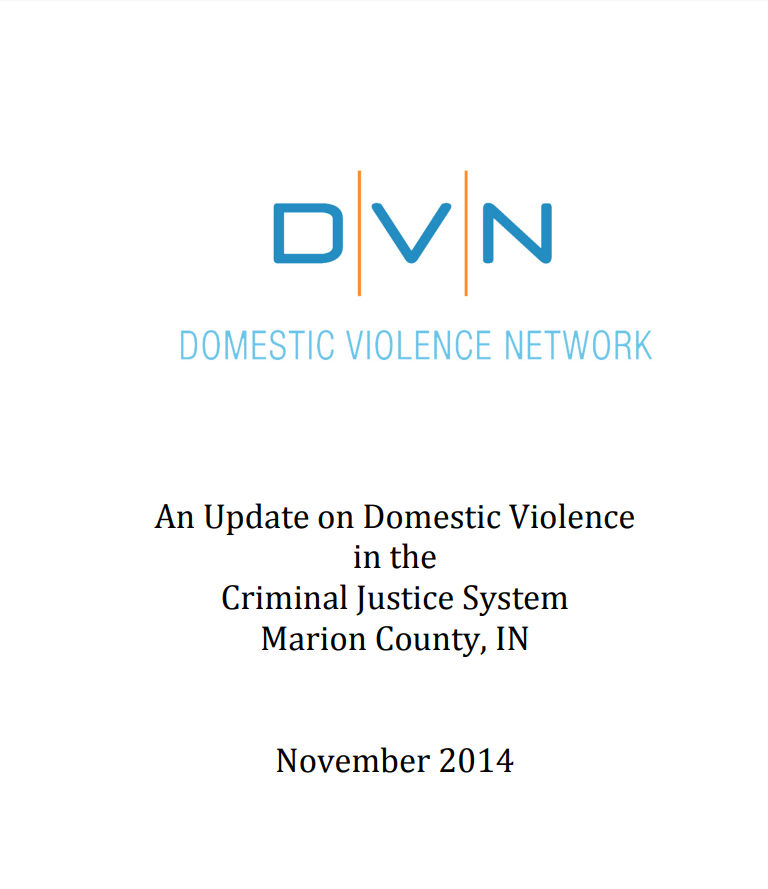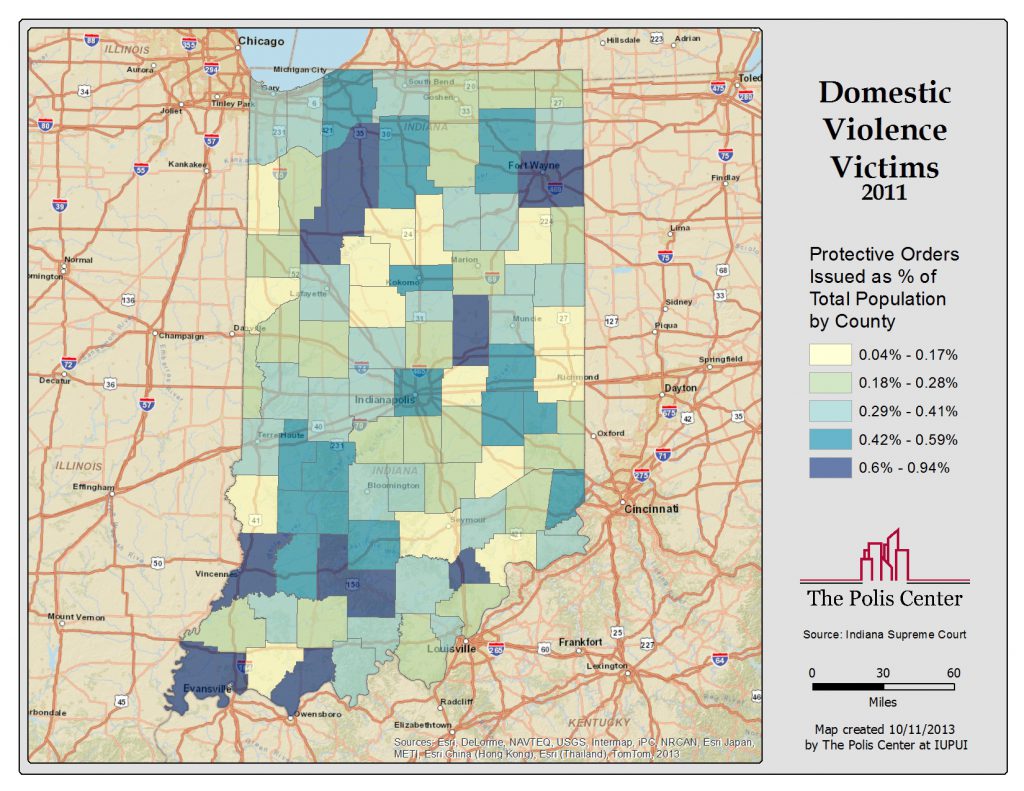Up to now, it has been very difficult to generate statistics describing the state of domestic violence in Marion County. This report presents the findings of a feasibility study conducted by The Polis Center at IUPUI for the Domestic Violence Network to link data from four sources that collect information on victims and perpetrators of domestic violence in the legal system, including The Julian Center, Indianapolis Metropolitan Police Department (IMPD), Marion County Prosecutor’s Office, Indiana Supreme Court. The purpose of the project was to demonstrate the feasibility of integrating the domestic violence data, given the quality and incompleteness of some of the required data sets, and to determine what analysis and reporting are possible given these limitations. Data had to be cleaned and standardized to ensure comparability across the data sets, and an algorithm was developed to identify unique individuals across all data sets.
The result is a report of statistics representing the picture of domestic violence for incidents where the legal system is involved. This does not count all of the incidents that go un-reported.
Domestic Violence Victims and Perpetrators
- In 2011, there were an estimated 10,687 victims of domestic violence (1.5% of the population) and 9,962 perpetrators.
- 13% percent of victims experienced more than one incident of domestic violence during the 2011 and 2012 year.
- 14% of perpetrators are implicated in more than one incident.
- 8% of perpetrator-victim pairs were involved in a domestic violence incident with each other more than one time.
Demographics/Socio-economics of Victims and Perpetrators
- Victims are predominantly females (79%), with the largest group aged 20 to 24.
- Perpetrators are predominantly males (80%), with the largest group aged 25 to 29.
- 51% of victims are Caucasian, however, African Americans are disproportionately represented among domestic violence victims.
- 84% of the perpetrator-victim pairs have the same race, with 48% of the pairs both Caucasian.
- 78% of perpetrator-victim pairs involve a male perpetrator and female victim.
- African Americans are disproportionately represented among perpetrators in crime incidents involving domestic violence as compared with Caucasians.
- Caucasian victims appear to be more likely to file a protective order than African American victims.
- Low-income neighborhoods have a higher reported incidence of domestic violence than middle- and upper-income areas.
Where Does Domestic Violence Occur?
- 77% of reported domestic violence incidents occur at home.
Legal Outcomes of Domestic Violence Cases
- In 2012, the Marion County Prosecutor’s Office reviewed 6,129 domestic violence cases, a 32% increase since 2009.
- Of all the charges that resulted in a conviction from 2009 to 2012, 8.7% were guilty verdicts and 91.3% were plea agreements.
- Of cases where charges are filed and not dismissed, the large majority end up in a conviction. 96% of these cases from 2009 – 2012 resulted in conviction.
- Of the cases where the case progression is known, no charges were filed in 31% of the domestic violence cases that reach the Marion County Prosecutor’s Office in 2012.
- Of those cases where charges are filed, 55% were dismissed, 43% resulted in a conviction, and 2% resulted in a ‘not guilty’ verdict.
- The number of dismissals continually decreased from 2009 to 2012, and the number of cases where no charges were filed continually increased.
- Misdemeanors are more common than felonies (60% of charges4 are misdemeanors).
- In 2011, 21% of the victims that appear in The Julian Center outreach file requested a protective order, which was not necessarily related to the incident reported in The Julian Center data, at some point in the past, and 14% requested one in that same year (2011).


